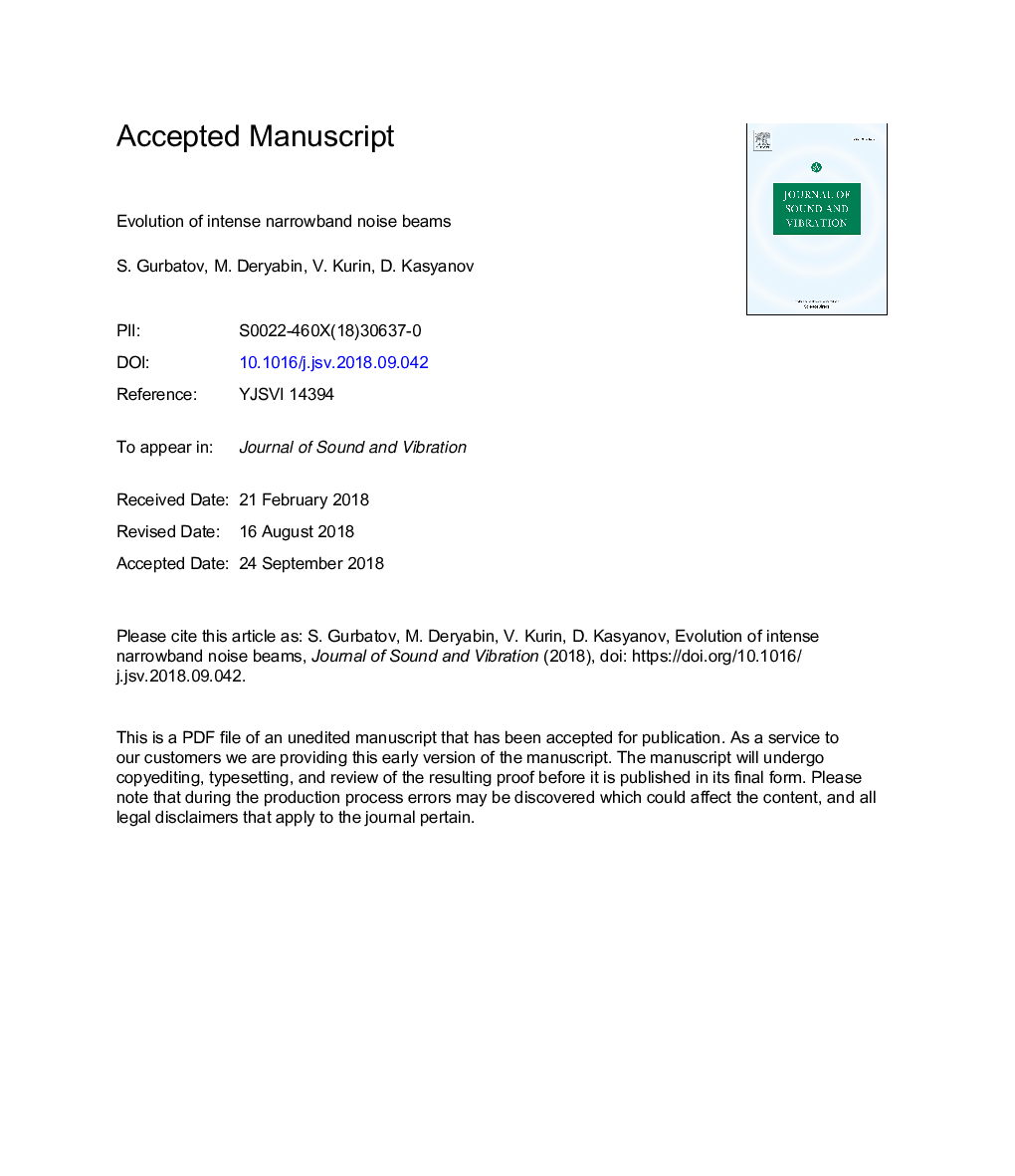| Article ID | Journal | Published Year | Pages | File Type |
|---|---|---|---|---|
| 11012580 | Journal of Sound and Vibration | 2019 | 28 Pages |
Abstract
The main part of this work is focused on the experimental study of the evolution of acoustic beams with a narrowband spectrum at the input. The nonlinear interaction leads to initiation of new harmonics whose width increases with the harmonic number and a continuous power spectrum is formed at high frequencies. The experimental equipment enables us to study the beam propagation at large acoustic Reynolds numbers and analyze the spectral content of the field in a wide frequency band. For narrowband noise, the input field can be considered as a quasi-monochromatic signal with random amplitude and phase modulation. The amplitude-modulation suppression is observed for large Reynolds numbers as the wave propagates. Far from the sound transducer, the field on the sound transducer axis is a sequence of discontinuities with a universal behaviour between them. The locations of the discontinuities and their amplitudes and, hence, the statistical characteristics of the waves are determined by the phase fluctuations of the initial wave. It has been theoretically shown that the field spectrum at the discontinuous stage has a universal structure which is determined by the probability distribution of the initial wave frequency. It has been demonstrated experimentally that the theory describes sufficiently well the noise-signal spectrum form at the discontinuous stage.
Related Topics
Physical Sciences and Engineering
Engineering
Civil and Structural Engineering
Authors
S. Gurbatov, M. Deryabin, V. Kurin, D. Kasyanov,
